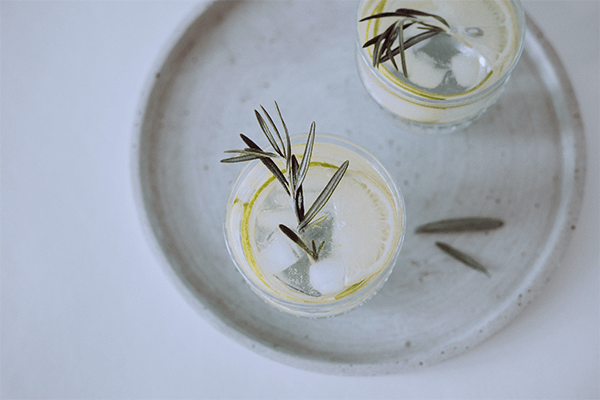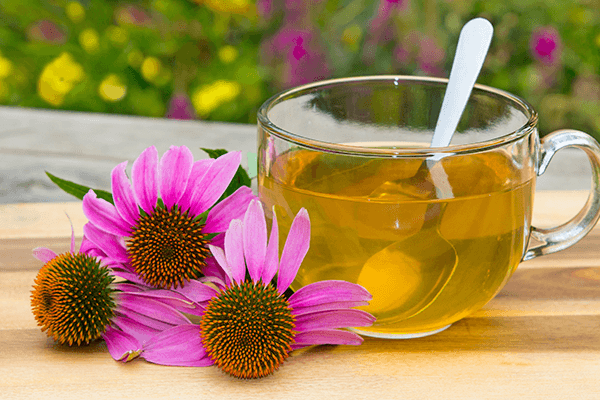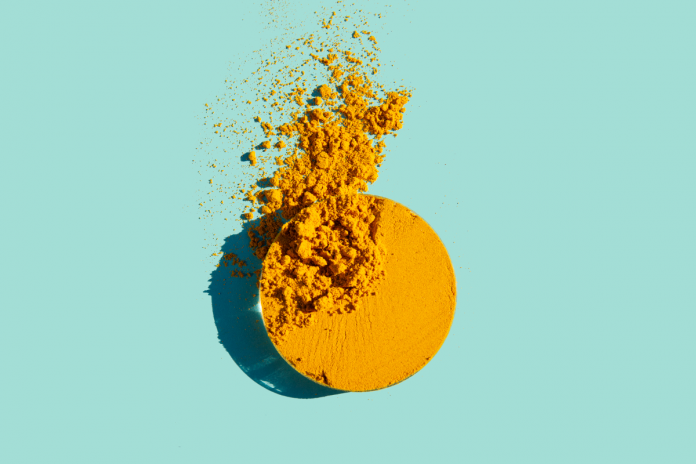If you’ve ever had Indian food, you’ve probably had turmeric. It’s what gives curry dishes (and curry powder!) that vivid orangish-yellow color.
It’s also one of the hottest superfoods around due to its impressive list of health benefits.
Let’s dive into this popular Asian spice and how you can get more of it into your daily routine.
What is turmeric?
Turmeric hails from South Asia (India, most likely) but today it is grown in many different humid climates throughout the world.
Fun Fact: Turmeric was first cultivated as a dye. If you’ve ever gotten turmeric on your clothes you can see why it makes such an excellent coloring agent! Later on, it was used as a cosmetic and then finally as the revered and aromatic food spice.
Turmeric is sometimes referred to as Indian saffron because its deep orange-yellow color is similar to that of saffron. But it comes from an entirely different class of herbals. Turmeric is actually part of the ginger family. The vibrant curcuma longa root, belongs to the Zingiberaceae class of herbs, same as ginger root.
Turmeric is a kitchen staple in India, where it is known as the “Golden Goddess.” It has a pungent, bitter flavor with subtle hints of citrus or ginger.
In the kitchen, turmeric is most commonly used in dried, powdered form as a seasoning. Ground turmeric powder is made by boiling the roots, letting them dry, and then grinding them down into powder form. However, just as we use both ginger powder and fresh ginger root, so too can we enjoy fresh turmeric root in our food.
But turmeric is so much more than a spice! The “Golden Goddess” has also been used for thousands of years in traditional herbalism.
Turmeric in Ayurveda and Traditional Chinese Medicine
Turmeric is like the little black dress of traditional herbalism — it’s suitable for nearly everybody and every occasion!
The use of turmeric in traditional herbalism — from Ayurveda, to Siddha to Traditional Chinese Medicine (TCM) — dates back thousands of years. In fact, an Ayurvedic text dating back to 250 B.C. recommends a turmeric ointment to support a healthy digestive response to the distress caused by expired food.
Turmeric is held in high regard in Ayurvedic practice as a “cleanser of the body.” It is thought to strengthen the overall energy of the body, promote a healthy menstrual cycle, support healthy respiratory function, and aid the pain response.
In both Ayurvedic and traditional Chinese medicine, turmeric is also considered a bitter digestive and often used to support healthy digestion.
Of course, traditional herbalism utilized the health-promoting properties of turmeric long before modern science was even in existence. But today, the scientific evidence obtained from clinical trials is mounting to explain just how and why turmeric can be so beneficial to our health and longevity…
What Are The Health Benefits of Turmeric?
Turmeric contains over 200 phytochemical compounds known as curcuminoids. Curcuminoids are what gives turmeric its awesome yellow pigment. They are also the reason turmeric is one of the most popular superfoods on the planet! The primary curcuminoid in turmeric is curcumin (often sold as a dietary supplement). Curcumin is associated with a myriad of health benefits:
1. May Support a Healthy Antioxidant Status
Curcumin is an antioxidant. Antioxidants are powerful plant compounds found in colorful plant foods, like all those fruits and veggies we should be eating more of!
Antioxidants are super important to our overall health because of their protective effects — they help support healthy cellular function and defend against harmful free radicals and oxidative stress.
2. May Support a Healthy Inflammation Response
The body’s inflammatory response is basically the gatekeeper of good health. The more we can support a healthy inflammation response, the better!
It turns out, turmeric works wonders in this department. Studies show that the curcumin in turmeric may work through many pathways to support a healthy and balanced inflammation response.
3. May Support Healthy Brain Function
Can curry make you smarter?? Here’s some food for thought: seniors in India (where turmeric is a staple ingredient) seem to enjoy healthier cognitive function.
There are a number of ways turmeric may support healthy long-term brain function, the most well-documented being its role in supporting a healthy inflammatory response, antioxidant status, and ability to bind to metals.
Studies also show that curcumin may support healthy BDNF levels. BDNF is a growth hormone that is responsible for helping neurons flourish within your brain and helping your logical faculties function, making you feel smarter!
4. May Support a Positive Mood
Healthy BDNF levels are associated with mood regulation and relaxation. By supporting healthy BDNF levels, curcumin (and turmeric) may help support a healthy stress response and positive mood.
5. May Support Healthy Cardiovascular Function
Curcumin has been shown to support overall cardiovascular health by supporting healthy cholesterol levels, healthy blood vessel function, and healthy blood circulation.
How to Use Turmeric
Wondering how you can get more of this super-spice into your diet?? Easy, just add it to… well, almost anything!
You can use dried turmeric powder or finely zested fresh turmeric root— whichever you fancy!
Ground (Dried) Turmeric
Ground turmeric is an ultra-easy way to boost the antioxidant content (and add a fun burst of color!) to all sorts of dishes… from curry, to pasta, to rice, to soup. You can even blend it into your morning green juice, tea, or smoothie!
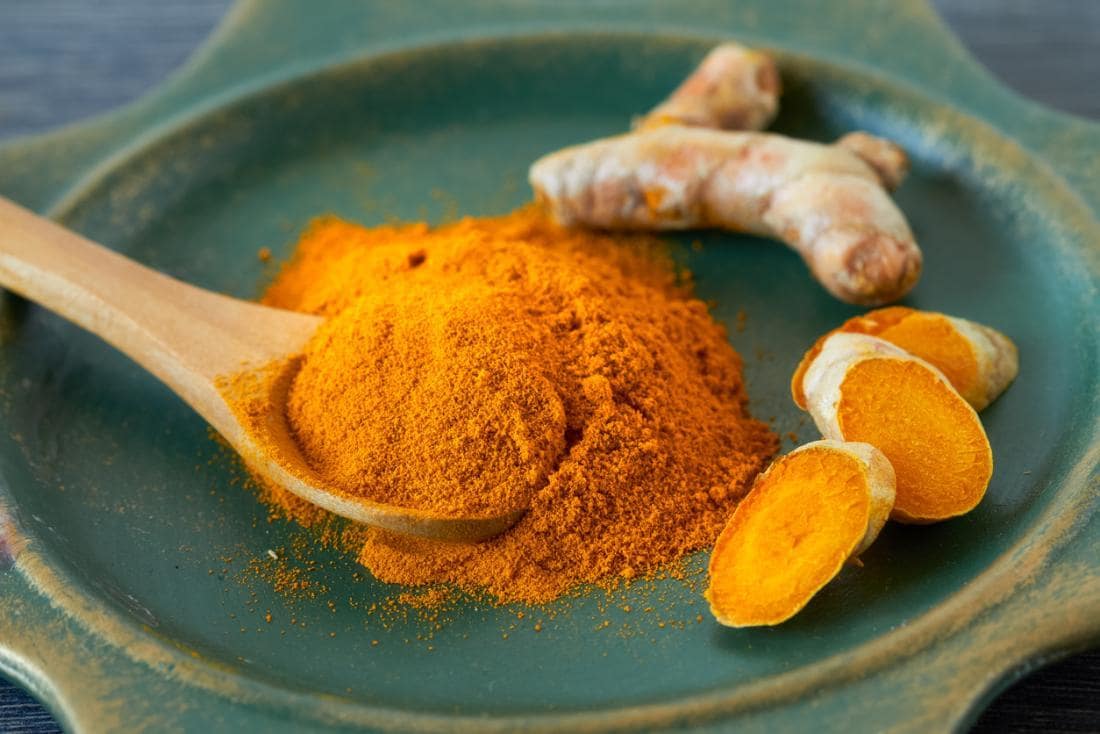
Fresh Turmeric
You can use fresh turmeric just as you would ground turmeric, it just requires a couple extra steps of preparation. First, you need to peel it. It’s similar to a ginger root, so you can use the edge of a spoon to gently peel off the outer skin. Once peeled, simply grate it with a microplane grater (or slice off whole pieces if you prefer). You can wrap the unused portion in plastic wrap and store it in the refrigerator for 7 to 10 days.
Here are some of our favorite ways to use turmeric:
Insider’s tip: Always combine turmeric with a pinch of ground black pepper! Studies show that piperine, the active ingredient in black pepper, increases your body’s ability to absorb turmeric by as much as 2000%! Research also shows that the effect of curcumin is enhanced (and more bioavailable to the body) when it is combined with fats, like coconut oil.
- Sprinkle ½ teaspoon into beaten raw eggs before making them into a scramble or an omelet. Yum!
- Make a better butter by blending a dash of turmeric into some melted butter. Drizzle it over cooked vegetables or potatoes.
- Stir ½ teaspoon into your morning oatmeal. You can balance out the flavor with a tiny drizzle of maple syrup or some sweet blueberries.
- Blend 1 teaspoon into your morning smoothie. Include sweeter fruits, like pineapple or banana, to offset its bitter flavor.
- Make turmeric tea! This is perhaps the easiest (and most traditional) way to enjoy the health benefits and unique flavor of this super-spice…
What is Turmeric Tea?
Turmeric tea is basically any hot tea (or tisane) made with fresh or ground turmeric. It can be as simple as turmeric steeped in boiling water, or as complex and indulgent as the increasingly popular “Golden Milk.” Drinking turmeric tea daily is also one of the easiest ways to begin to experience the health effects of curcumin!
How to Make Turmeric Tea
Here are 3 easy (and delicious!) turmeric tea recipes:
1. Basic Turmeric Tea
If you like the taste of plain turmeric, you can make the easiest turmeric tea ever: Simply stir ground turmeric into a cup of hot water and, poof! A caffeine-free turmeric tisane (AKA herbal tea) that requires zero prep time.
If you aren’t the biggest fan of the distinct flavor of this golden spice (you aren’t alone!), try this variation instead:
Next time you’re making your favorite green tea or black tea, simply add ¼ teaspoon of turmeric to your mug before pouring in the hot water. The flavor of turmeric works very well with both delicate green teas and full-bodied black teas. Let it all steep together and give it a quick stir before you sip.
You can always add a little raw honey as a sweetener to either of these variations to offset the bitterness of the turmeric. Or use only a pinch of turmeric the first time you make it, then slowly add more as you get used to the flavor.
2. Golden Milk
Similar to the popular chai latte, golden milk blends together a few different spices, including black pepper and healthy fat from coconut milk to supercharge the absorbability of the turmeric. Not only is golden milk a delicious treat, but it’s good for you too! It’s the perfect way to get the health effects of turmeric and to wind down in the evening for some restorative, healing sleep.

Ingredients
- 1 sachet Pique Electric Turmeric
- 1 cup unsweetened almond or coconut milk
- 1 tbsp honey
- 1 tsp virgin coconut oil
- Pinch of black pepper
Instructions
- Combine all ingredients in a medium saucepan and heat until steaming and bubbles form around the edges of the pan. Turn heat off and vigorously whisk until the mixture is frothy. Pour into a mug and sip hot.
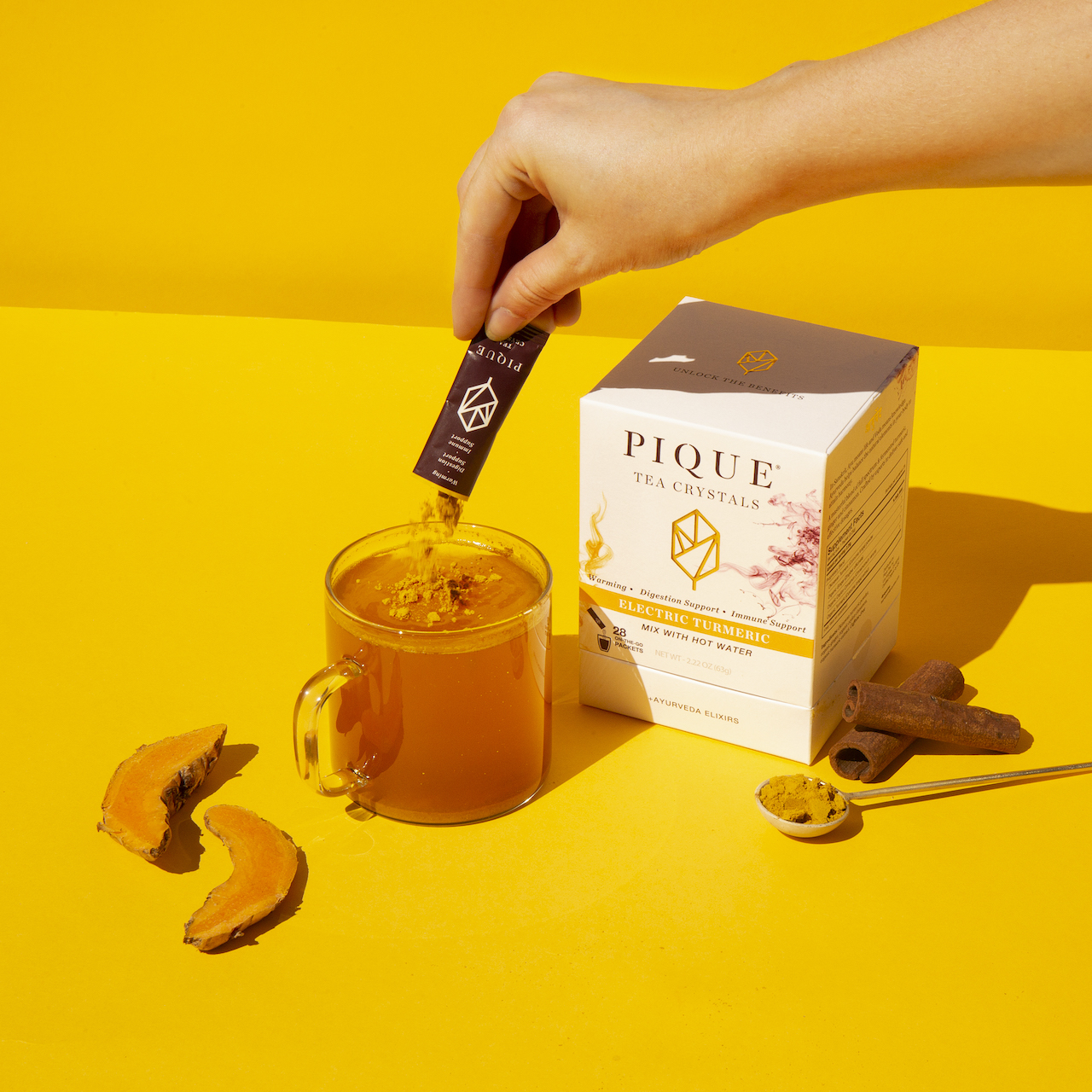
Pique Electric Turmeric
Invigorate your cells with Okinawa’s best-kept longevity secret. Delight your palate, sunup to sundown.
3. Ginger Turmeric Tea
Pairing turmeric with its cousin, ginger, is an awesome way to bring some next-level support for the body’s inflammation response. Ginger brings a warm and spicy kick to turmeric’s pungency, so this recipe is definitely for those who like a brew that packs a punch.
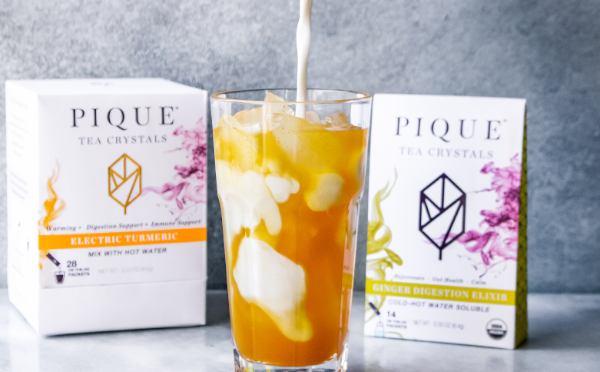
Ingredients
- 1 sachet Pique Electric Turmeric
- 1 sachet Pique Ginger Digestion Elixir
- 1/4 cup hot water
- 1/4 cup pineapple juice
- 1/2 cup unsweetened coconut milk
- 1 cup ice
Instructions
- Dissolve Electric Turmeric Tea and Ginger Digestion Elixir in 1/4 cup hot water. Add a few ice cubes to cool tea.
- Add ice to a tall glass and pour in tea mixture and pineapple juice. Add coconut milk and stir to combine. Enjoy.

Pique Electric Turmeric
Invigorate your cells with Okinawa’s best-kept longevity secret. Delight your palate, sunup to sundown.
Where Can You Find Turmeric?
Ground turmeric is available in the spice section of most grocery stores. Fresh turmeric is usually sold in natural health food stores or at your local farmers market. With the rise in popularity, some regular grocery stores have now started selling turmeric root, too! Tip: go for organic whenever possible to avoid unnecessary pesticides and chemicals.
If you’re looking for turmeric supplements, they usually live in a separate aisle with all of the other dietary supplements.
Can turmeric be harmful?
Consuming turmeric in food/tea is very safe. Some people have reported side effects (digestive upset, chest tightness, or skin rashes/swelling) from high doses of curcumin supplements, or turmeric extract. Chronic curcumin supplementation can cause liver toxicity and may interact with certain drugs. Individuals with liver conditions or who take prescription medications should consult their healthcare provider before use.
Final Thoughts
India’s “Golden Goddess” is a signature spice in Indian cuisine, bringing a vibrant yellow color to curries and other tasty dishes, including rice, oatmeal, smoothies, and more!
Outside the kitchen, turmeric has a long history of use in traditional herbalism like Ayurveda and Traditional Chinese Medicine.
Today, science proves that curcumin— the most active plant compound in turmeric— has many health benefits, including supporting a healthy antioxidant status, a healthy inflammation response, healthy cardiovascular function, and more!
Drinking turmeric tea is an easy way to sip your daily dose of antioxidants and reap the health benefits of this super-spice!


